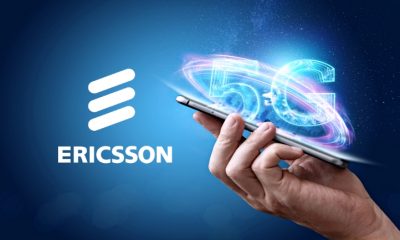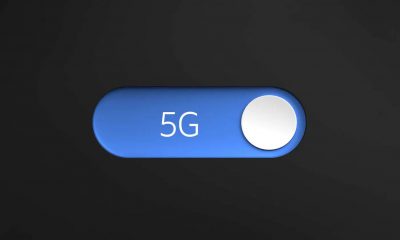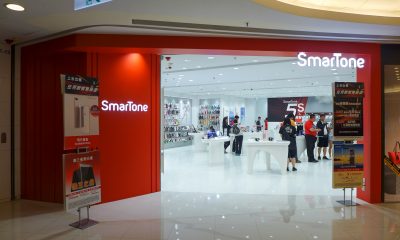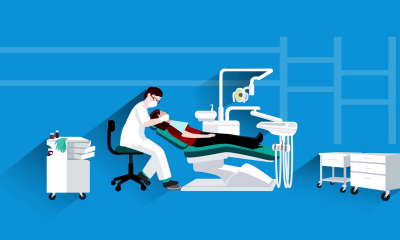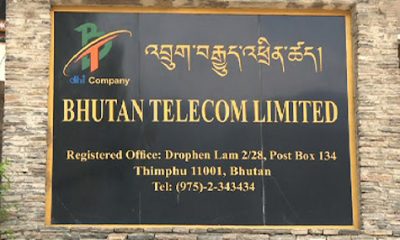5g
Ericsson expands its end to end 5G platform in India

NEW DELHI: Ericsson is expanding its end-to-end 5G Platform by adding new hardware and software products to the Ericsson Radio System portfolio, further enhancing the agility and speed with which Indian operators can roll out their 5G networks.
Ericsson is also strengthening its end-to-end mobile transport solutions by building on its radio expertise and adding best-in-class transport technologies from Juniper Networks and ECI.
RAN Compute – architecture for greater flexibility
Ericsson is launching the RAN Compute portfolio, which responds to service provider’s need for greater flexibility in the deployment of Radio Access Network (RAN) software and hardware functions. RAN Compute is an architecture that allows service providers to flexibly distribute RAN functions – such as beamforming and radio control – where needed to fine-tune use case performance while also lowering total cost of ownership.
The RAN Compute portfolio includes all the current basebands in addition to four new RAN Compute products that provide up to three times the capacity of current basebands. Two new RAN Compute Basebands enable service providers to deploy RAN functions centrally, or at the radio site, while two new RAN Compute Radio Processors enable RAN functions to be placed closer to the radio for enhanced mobile broadband, ultra-low latency applications while reducing site footprint.
Nitin Bansal, Head of Network Solutions for the Market Area South east Asia, Oceania and India says, “5G enables low latency, ultrahigh speeds and high reliability – making it one of the most important infrastructures for industry digitalization and realizing Digital India. The hardware and software that we are launching today offers Indian service providers with an expanded and adaptable 5G platform, making it easier for them to deploy 5G.”
As per the Ericsson Mobility Report, June 2018 edition, by end of 2023, global data traffic is projected to grow at a rate of 40 percent per year with more than 20 percent of mobile data traffic worldwide expected to be carried by 5G networks. This is 1.5 times more than the total 4G/3G/2G traffic today. Mobile networks must cope with this surging traffic to provide a better user experience. Video forms more than 50% of the data volume in most networks today, placing pressure on networks when it comes to the customer experience. The global mobile data traffic trends are also being reflected in India as well.
“The reason why 5G is gaining momentum globally and in India is that operators will be able to manage their networks efficiently through a combination of 4G and 5G. Ericsson, with its portfolio of 5G ready Network solutions, is the partner of choice to help operators in India for their seamless migration from 4G to 5G.” states Nitin Bansal.
Smoother network migration with Ericsson Spectrum Sharing
The company is also launching its new Ericsson Spectrum Sharing software, expanding the versatility of Ericsson Radio System for 5G deployments. This gives service providers a greater opportunity to turn on 5G and speed up network coverage.
Ericsson Spectrum Sharing enables a smooth and fast network migration through simultaneous and dynamic support of 4G and 5G within the same spectrum band using the Ericsson Radio System, once operators are ready to make the transition. The new functionality can be implemented through a remote software installation on Ericsson Radio System radios shipped since 2015.
This capability will allow service providers to deliver nationwide 5G coverage with a much more flexible spectrum migration strategy – removing the need for dedicating fixed spectrum assets to 5G and negatively impacting 4G performance. Ericsson’s Spectrum Sharing solution will enable Thai operators to deliver a superior end-user experience in the most cost-efficient way.
Raising capacity in urban areas with Street Macro and integrated transport
Ericsson also announced today new transport solutions adapted to create an integrated and complete Street Macro solution for millimeter wave 5G deployment. This is required to manage data traffic in areas where there is highest demand – cities.
All solutions will become commercially available in the second half of 2019
End to end transport solutions for 5G
With its focus on transport between radio and core functions, Ericsson delivers transport portfolios specifically for backhaul and fronthaul. Ubiquitous transport solutions for both 4G and 5G are gaining strong momentum with service providers and Ericsson’s flagship mobile backhaul product – Router 6000 – empowers close to 60 operators. More than 110 operators also use Ericsson’s 5G-ready microwave technology, MINI-LINK solutions.
To bolster its end-to-end 5G transport portfolio, Ericsson is now extending its partnership with Juniper Networks. Ericsson’s Router 6000 product family will be complemented by Juniper’s edge and core solutions, providing seamless connectivity from radio cell site to core, thereby guarantying the performance, quality and ease-of-use of the 5G system.
Juniper’s security products will also be part of Ericsson’s solution to secure its customers’ mobile networks as part of its end-to-end approach for securing existing and new 5G networks.
Ericsson is also complementing its optical transport offering for metro with a new partnership with ECI, a global provider of elastic network solutions. With ECI as partner, Ericsson will be able to deliver newly-enhanced optical transport solutions for service providers, as well as critical infrastructure customers.
“Essentially, we can provide Indian operators with an end to end range of solutions for their mobile networks – enabling them to rollout 5G faster and deliver a superior 5G experience for consumers in India.” says Nitin Bansal
5g
MediaTek Catch-up with Tech: Infinix Zero 30 5G with Dimensity 8020 launched
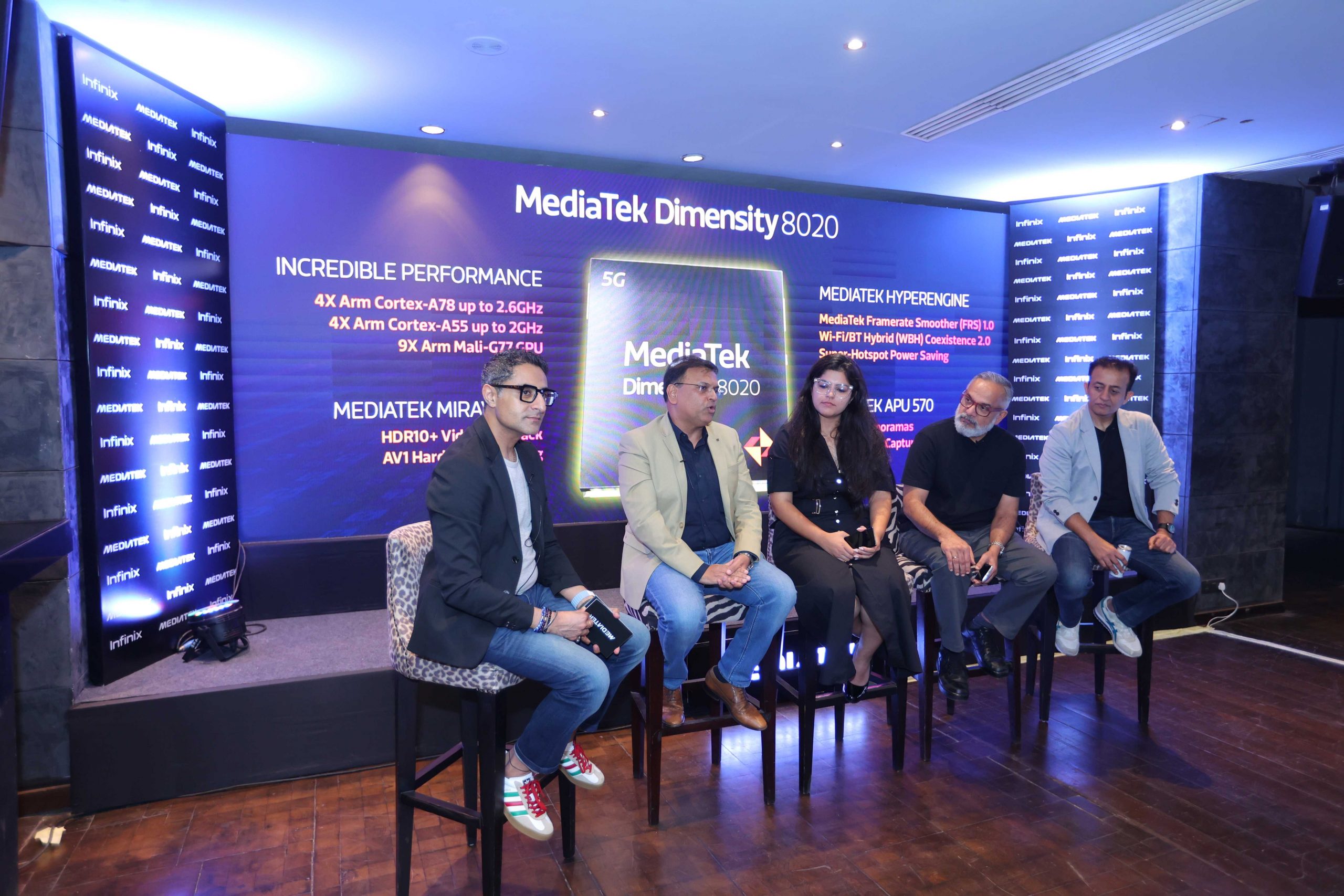
NEW DELHI: Chipset maker MediaTek, which claims to power more than two billion connected devices every year, hosted ‘Catch-up with Tech’ in collaboration with handset brand Infinix on August 28 to share insightful and engaging conversations about the new-age smartphones and innovative technologies powering everyday lives.
The meet-up threw the spotlight on the MediaTek Dimensity Auto, Satellite solutions and Generative AI along with an extensive showcase of newly-launched Infinix Zero 30 5G powered by MediaTek Dimensity 8020, Infinix GT 10 Pro powered by MediaTek Dimensity 8050, and Infinix QLED TV powered by MediaTek.
In terms of specs, the Infinix Zero 30 5G is tailored for young storytellers and creators, featuring the first-ever smartphone to deliver 4K 60fps video recording from its 108 MP OIS rear camera and ultra-high resolution 50MP front camera. The Zero 30 series powered by MediaTek Dimensity 8020 is said to be a game changer for the front camera vlogging experience along with being the slimmest curved AMOLED smartphone in the segment with glass and a vegan leather back panel. It also claims to be one of the most premium-looking devices in the segment.
The event witnessed a panel discussion moderated by Anuj Sidharth, Deputy Director Marketing & Corporate Communications, MediaTek and included expert panelists from Infinix, MediaTek and two renowned professional photographers.
“With the fifth edition of Catch-up with Tech, we aim to bring consumers closer to the technology and enable them to make informed buying decisions based on their diverse needs. In collaboration with Infinix, this meet-up is in-line with MediaTek’s vision of technology democratization and making innovative technology accessible to everyone,” said Anku Jain, Managing Director, MediaTek India. “The MediaTek Dimensity 8020 in Infinix Zero 30 5G brings faster displays, brilliant cameras and ultra-fast performance. Further, MediaTek Imagiq technologies enrich the capture experience by combining dedicated AI, imaging processors and accelerators to provide incredible results,” he added.
Anish Kapoor, CEO, Infinix Mobile India, said, “Featuring India’s first 50MP 4K 60 fps video recording, Infinix Zero 30 5G is primed to redefine smartphone imaging capabilities, setting a new standard for the creators and vlogging enthusiasts. Our collaboration with MediaTek has played a pivotal role in shaping our exceptional smartphone portfolio, and the Zero 30 5G stands as evidence of our unwavering commitment to innovation and delivering unmatched experiences to our users. The display and design of the device represent a leap forward in smartphone technology. As Infinix Zero 30 5G hits the shelves, we are positive that our customers will find this new offering as exhilarating as we do, further empowering creators to capture their story like never before.”
Radhakrishnan Chakyat, a photography evangelist, founder and host of Pixel Viilage, said, “Infinix Zero 30 5G smartphone powered by MediaTek Dimensity 8020 chipset has amazing hardware features, an excellent camera, dual-view video mode and is primed for optimal content creation and saves a tremendous amount of editing time.”
Aarzoo Khurana, a wildlife photographer, said, “Over the last few days, I clicked various pictures and recorded a few videos with the newly-launched Infinix Zero 30 5G powered by MediaTek Dimensity 8020, and the experience has been truly inspiring. Infinix’s smartphone’s OIS feature helps content creators click shake-free pictures and the front camera, which is extremely sharp and detailed, enables content creators to click countless selfies.”
5g
Nokia launches Nokia MEA Mobile Broadband Index confirming 5G drives digital transformation
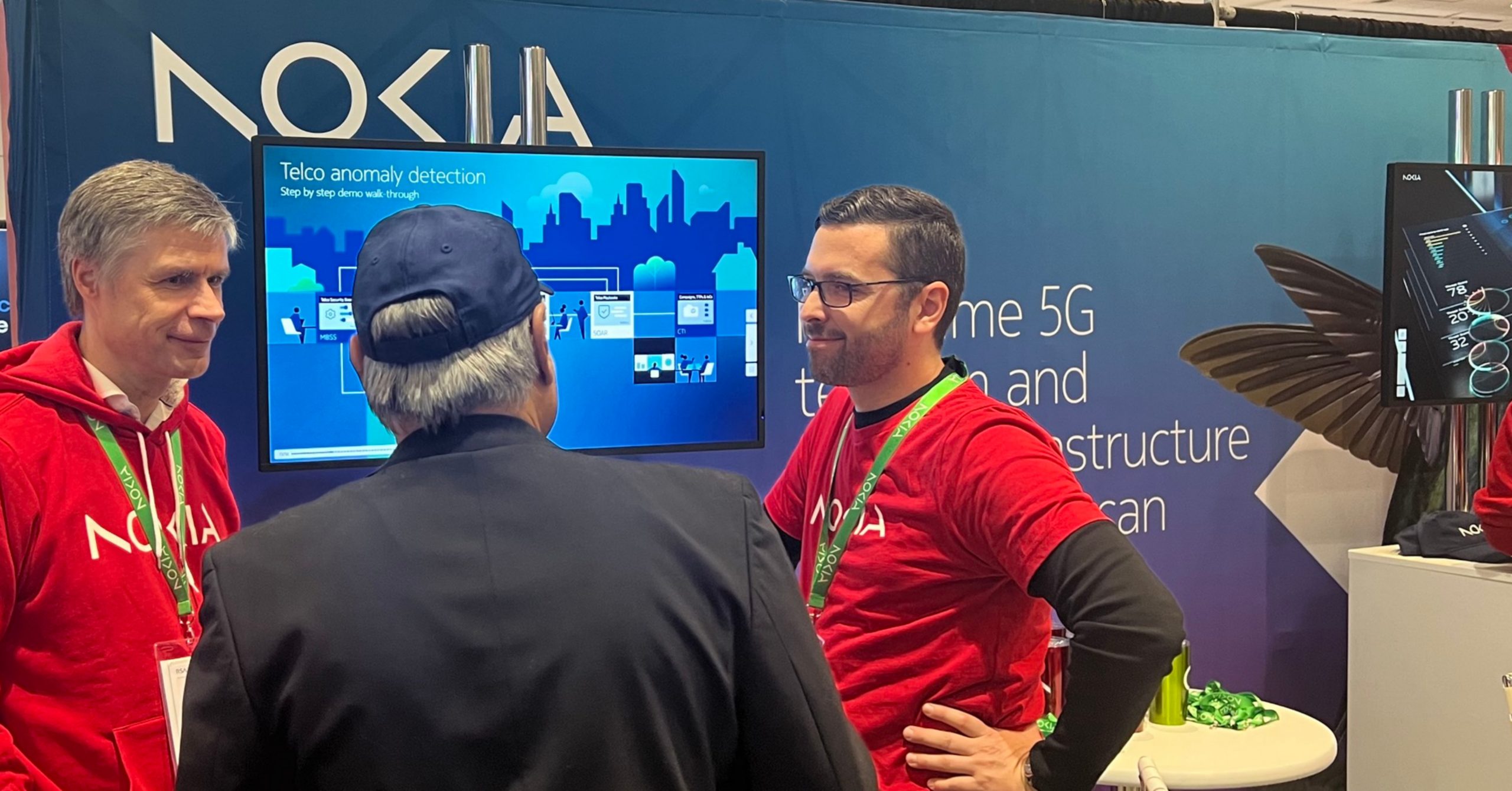
NEW DELHI: Nokia has announced the results of its new research report, the Nokia MEA Mobile Broadband Index, which provides a comprehensive overview of the MEA region’s mobile broadband landscape. The in-depth report highlights the steady growth of 5G in the Middle East and Africa region (MEA) as well as its impact on digital transformation.
It confirms that the Middle East is far ahead of Africa in terms of 5G adoption, while many operators in Africa are still developing their business models around 4G. Voice traffic still relies on 2G and 3G networks in many parts of the region.
5G is forecast to increase steadily and will contribute to the growth of the mobile broadband subscriber base, which is expected to grow with a CAGR of six percent in MEA. According to the report, 4G networks in MEA account for 79 percent of overall data traffic today, and by 2027, 4G and 5G will together account for 90 percent of data traffic. In the same year, 4G subscribers will reach 1,214 million (53 percent of total subscribers) whereas 5G adoption is estimated to reach 380 million subscribers (17 percent of total). Yearly ARPU is estimated to increase at USD$3.4 in 2027, and total data traffic is expected to increase at a CAGR of 32 percent from 2022 to 2027.
The report shows that in the Gulf Cooperation Council (GCC) region, 5G adoption is the fastest, and 5G subscribers are expected to reach 75 percent by 2027, mainly driven by Saudi Arabia. In non-GCC Middle Eastern countries and in Africa, 4G will continue to expand and remain dominant until 2027, while 5G deployment is at nascent stage today and poised to gain more and more momentum over the next years.
As the report confirms, 5G Fixed Wireless Access (FWA) in the GCC countries and 4G FWA in the rest of the MEA region are one of the most attractive use cases, with a significant opportunity for operators to drive incremental revenues. Furthermore, 5G networks are more energy efficient than previous radio network generations, helping operators reach their sustainability targets.
Mikko Lavanti, Head of Mobile Networks at Nokia MEA, said: “MEA is a diverse region with many countries at different stages of development and that is reflected in our report. Data consumption with high-speed networks is increasing exponentially across the MEA market in both urban and rural areas. Reliable 4G and 5G networks are critical for bridging the digital divide in the region, in addition to supporting data-intensive applications for communities and businesses. Nokia is helping both operators and enterprises unlock new opportunities with 5G, building the evolution towards future technologies that will enable enhanced experiences such as the Metaverse.”
5g
Airtel announces its largest ever 5G roll-out in 125 cities
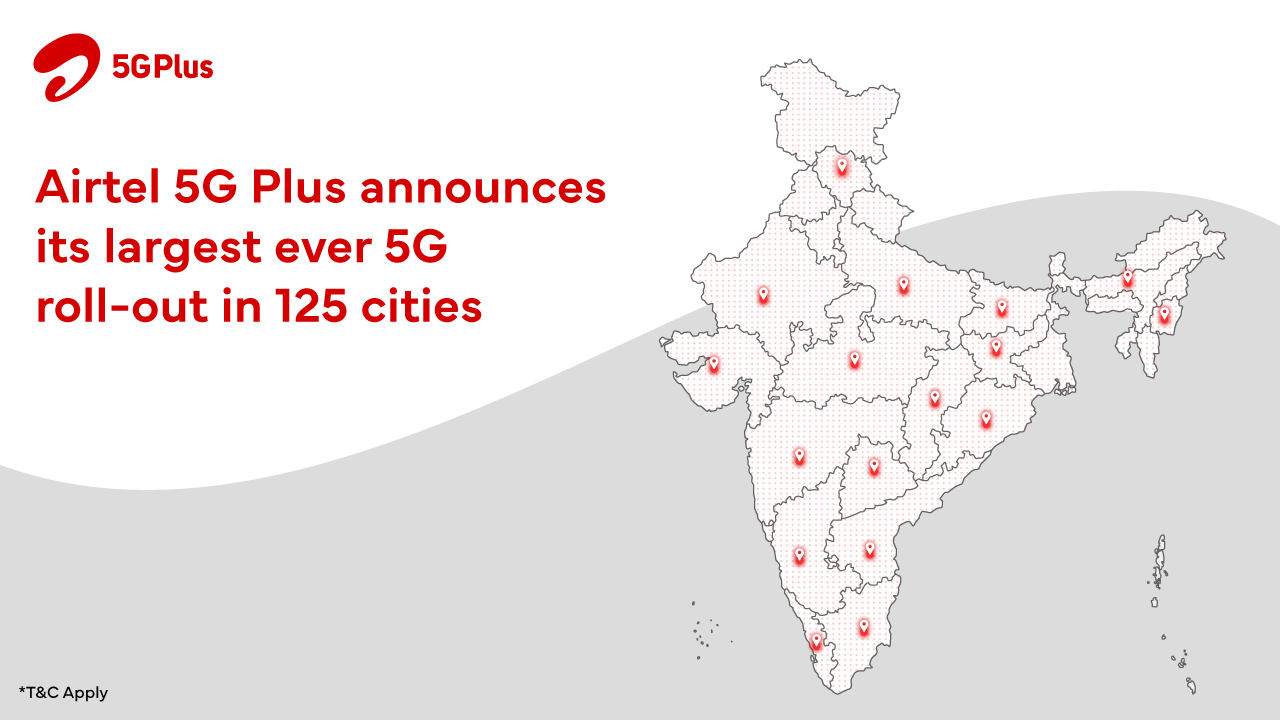
NEW DELHI: Bharti Airtel, India’s telecommunications services provider, today announced the launch of its ultra-fast 5G services in 125 cities. Airtel 5G Plus service is now available to customers in over 265 cities in the country.
Airtel 5G Plus has three compelling advantages for customers. First, it runs on a technology that has the widest acceptance in the world with the most developed ecosystem. This ensures that all 5G smartphones in India seamlessly work on the Airtel network. Second, the company promises to deliver the best experience – between 20 to 30 times higher speeds than today coupled with brilliant voice experience and super-fast call connect. Finally, Airtel 5G Plus network will also be kinder to the environment with its special power reduction solution. Powered by the reliable Airtel network infrastructure, Airtel 5G Plus will provide superfast access to High-Definition video streaming, gaming, multiple chatting, instant uploading of photos et all.
Commenting on the launch, Randeep Sekhon, CTO, Bharti Airtel said, “5G has revolutionized the world of internet, ushering new era of connectivity and communications that will prove to be a game-changer for the country. At Airtel, we remain committed to delivering the highest quality of network and service to our customers as we roll-out 125 more cities today. Airtel was the first in the country to offer 5G services in October 2022, and today’s mega launch is our promise to connect every Airtel customer in the country with ultra-fast Airtel 5G Plus. Our 5G rollout is on track to cover all towns and key rural areas by March 2024.”
Airtel 5G Plus service availability will continue to rapidly expand – including service in all towns and villages in the country soon – as the company is working towards offering nationwide coverage. Airtel is now offering its 5G services in every major city from the upper northern city of Jammu to the southern tip of Kanyakumari.
In the last one year, Airtel has demonstrated the power of 5G with a host of powerful use cases that will change the way customers lead their lives and do business. From India’s first live 5G network in Hyderabad to India’s first private 5G network at the BOSCH facility in Bengaluru to partnering with Mahindra & Mahindra to make its Chakan manufacturing facility, India’s first 5G enabled auto manufacturing unit, Airtel has been at the forefront of 5G innovation.

